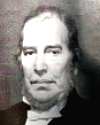
On 22 Apr 1789, Richard Roberts was born. This Welsh engineer was a versatile inventor who provided great improvements to diverse industries. He eventually became so famous, he was sought as a consultant by the French Emperor Napoleon and the Russian Emperor Nicholas.
If his name means nothing to you, when you read Richard Roberts, the Inventor, you will likely be astonished that a man who made so many significant contributions to improve manufacturing should now be so obscure.
Yet he left his mark in the efficiency of cotton mills, machine shops, steam engines and bridge building, among other applications, where he provided inventions-to-order.
In this paper on Richard Roberts, the Inventor, that William Henry Bailey read to the Manchester Literary Club in 1879, you will also be reminded of the names of a number of Roberts’ contemporaries that together are giants in the Industrial Revolution.

Robert Oppenheimer was an American theoretical physicist and science administrator, noted as director of the Los Alamos laboratory for development of the atomic bomb during WW II.
Today's book pick is: American Prometheus: The Triumph and Tragedy of J. Robert Oppenheimer, by Kai Bird, Martin J. Sherwin, which is an exhaustively researched biography of this brilliant, charismatic physicist. The teams of scientists that he led created the most awesome, destructive weapon that, in its effect, ended the war with Japan.
Oppenheimer became the most famous scientist of his generation–one of the iconic figures of the twentieth century, the embodiment of modern man confronting the consequences of scientific progress. Yet after the destruction at Hiroshima was known, he authored a radical proposal to place international controls over atomic materials (an idea that remains very relevant today).
Then, he opposed the development of the hydrogen bomb and criticized the Air Force’s plans which could lead to fighting an increasingly dangerous nuclear war. In the hysteria of the early 1950s, his ideas were anathema to powerful advocates of a massive nuclear buildup. In response, his opponents caused him to be brought in front of a hearing board to brand Oppenheimer as no longer to be trusted with America’s nuclear secrets. It was an ugly way to treat the man who had just helped end the conflagration of WW II.
This book sets forth Oppenheimer’s life and times, presented in unprecedented detail. The compelling portrait reveals a brilliant, ambitious, complex and flawed man profoundly connected to his nation’s major events–the Depression, World War II and the Cold War. It is at once biography and history, and essential reading to understand our recent past–and of our choices for the future.
It is available from Amazon, typically about New from $37.20. Used from $3.63. (As of earlier time of writing - subject to change.)
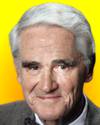 | I have always felt that I understood a phenomenon only to the extent that I could visualise it. Much of the charm organic chemical research has for me derives from structural formulae. When reading chemical journals, I look for formulae first. |
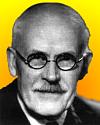 | The real difficulty about vulcanism is not to see how it can start, but how it can stop. |
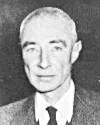 | I am become death, The Shatterer of Worlds. |
| Before you look at today's web page, see if you can answer some of these questions about the events that happened on this day. Some of the names are very familiar. Others will likely stump you. Tickle your curiosity with these questions, then check your answers on today's web page. | |
| Births | |
 | An American theoretical physicist and science administrator, born 22 Apr 1904, was the director of the laboratory on a remote mesa during the wartime development of the atomic bomb (1943-45). Later, accusations as to his loyalty and reliability as a security risk led to a government hearing that resulted the loss of his security clearance and of his position as adviser to the highest echelons of the U.S. government. His case became a cause célèbre in the world of science because of its implications concerning political and moral issues relating to the role of scientists in government. What is the name of the National Laboratory which continues research work at the same location at which Oppenheimer led atomic bomb development? |
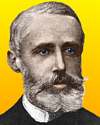 | Gaston Planté, born 22 Apr 1834, was a French physicist who in 1859 produced the first device of its type. In an improved form, his invention is widely used in automobiles. What was his invention? |
| Deaths | |
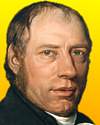 | Richard Trevithick (1771-1833) was a mechanical engineer and inventor who constructed the world’s first steam railway locomotive (1803). What was Trevithick’s major design advance in the use of steam power that made the locomotive possible? |
| Events | |
 | On 22 Apr of a certain year, the first nationwide Earth Day was celebrated in the U.S. as an environmental awareness event celebrated by millions of Americans with marches, educational programs, and rallies. In which decade was this first Earth Day celebrated? |
 | On 22 Apr 1924, a U.S. patent for new padlock construction was issued to its inventor Harry E. Soref. When he was unable to sell his invention of an inexpensive yet stronger padlock to any existing manufacturer, he established his own company, Masterlock. What now widely-seen construction feature for inexpensive padlocks did Soref originate? |
Fast answers for the previous newsletter for April 21: Yosemite and Sequoia • Agent Orange • cotton spinning and textiles • Top of the Needle, Seattle, Washington • a firehouse pole.
 If you enjoy this newsletter, the website, or wish to offer encouragement or ideas, please send feedback by using your mail reader Reply button.
If you enjoy this newsletter, the website, or wish to offer encouragement or ideas, please send feedback by using your mail reader Reply button. Your click on a Facebook, StumbleUpon, or other social button on the site webpages is also a welcome sign of appreciation. Thank you for using them.
© This newsletter is copyright 2020 by todayinsci.com. Please respect the Webmaster's wishes and do not put copies online of the Newsletter — or any Today in Science History webpage. (If you already have done so, please remove them. Thank you.) Offline use in education is encouraged such as a printout on a bulletin board, or projected for classroom viewing. Online, descriptive links to our pages are welcomed, as these will provide a reader with the most recent revisions, additions and/or corrections of a webpage. For any other copyright questions, please contact the Webmaster by using your mail reader Reply button.
--
If you do not want to receive any more newsletters, Unsubscribe
To update your preferences and to unsubscribe visit this link
Executive Real Estate Business Class
-
"It was like a man with wings. It wasn't like anything you'd see on TV or in a monster movie." ...
About the publisher
Search This Blog
Blog Archive
-
▼
2020
(1542)
-
▼
April
(134)
- ANIMALS: The rush to get a dog
- On This Day for April 30 - George Washington inaug...
- Medical Association Confirms Hydroxychloroquine 90...
- Newsletter for Thursday 30 April.
- April 30: Hitler Commits Suicide but What Happened...
- SCIENCE: The Spinosaurus is scarier than we thought
- Demystified: What’s the Difference Between a Bee a...
- On This Day for April 29 - British royal wedding, ...
- Breaking News and Historians in the News from HNN
- Is this Global Infection-induced Stealth Euthanasi...
- Newsletter for Wednesday 29 April.
- April 29: The Fall of Saigon and the Master of Fak...
- Family: 12 ideas to keep kids busy this week
- TRAVEL: Seeing from afar—the best photography books
- On This Day for April 28 - Benito Mussolini execut...
- Where did those 1600 Nazi Doctors go that were bro...
- Where did those 1600 Nazi Doctors go that were bro...
- Newsletter for Tuesday 28 April.
- April 28: James Cook Lands at Botany Bay, Mutiny o...
- HISTORY: Battling a pandemic so women could vote
- On This Day for April 27 - Independence for Sierra...
- New Op Eds This Week on History News Network
- NY Policy Results in Widespread Nursing Home Elder...
- Newsletter for Monday 27 April.
- April 27: Spanish Settle in the Philippines, Labor...
- SPECIAL: Family guide: Keeping your kids moving!
- The Last Kingdom | Historical quiz questions | Rom...
- On This Day for April 26 - Chernobyl nuclear accid...
- Data tells a drastically different story than what...
- Newsletter for Sunday 26 April.
- April 26: The Great Debate, Chernobyl and Oscar Wi...
- On This Day for April 25 - Hubble Space Telescope ...
- Save your life by using a mask correctly - Can pro...
- Newsletter for Saturday 25 April.
- CORONAVIRUS SPECIAL EDITION: What you need to know...
- April 25: The Guillotine, DNA and the 1st Solar Ba...
- PHOTOGRAPHY: Honoring those who help us every day
- How A Devastating Plague May Have Hastened The Dem...
- On This Day for April 24 - Installation of Pope Be...
- This Week's Roundup Top Ten from History News Network
- Newsletter for Friday 24 April.
- COVID 19 Research, the Nuremberg Code for research...
- April 24: War! What is it Good For?
- YOUR WEEKLY ESCAPE: The secrets hidden in a 500-ye...
- Truth Needs a Champion. Is It You?
- ANIMALS: More cats with the coronavirus. Should I ...
- On This Day for April 23 - Voting for Eritrea's in...
- Newsletter for Thursday 23 April.
- April 23: Defeat of the Vikings, Robert E. Lee and...
- SCIENCE: Beyond Greta: Who’s fighting for the Eart...
- Earth Day Special Edition: Today, let the planet i...
- Demystified Video: What's Inside the Great Pyramid?
- On This Day for April 22 - First Earth Day, Miguel...
- Breaking News from History News Network
- What do you think so far?
- Newsletter for Wednesday 22 April.
- April 22: Portugal Claims Brazil, Barbara Walters ...
- TRAVEL: Marooned at sea, 95,000 people
- On This Day for April 21 - French elections held, ...
- Newsletter for Tuesday 21 April.
- Your support empowers our scientists, explorers an...
- April 21: Babur Establishes the Mughal Empire, Tir...
- The step-by-step plan we are experiencing is expla...
- HISTORY: When George Washington was an epidemic fi...
- On This Day for April 20 - Explosion on the Deepwa...
- This Week's New Op-Eds on History News Network
- Corrected Link: Globalist Plan Rolling Out now cre...
- Globalist Plan Rolling Out now creating global pol...
- Newsletter for Monday 20 April.
- April 20: Pasteurization, Marie Curie Isolates Rad...
- SPECIAL: Coronavirus family guide: 'Back' to school
- VE Day at 75 | The scandalous lives of the Byrons
- On This Day for April 19 - American Revolution beg...
- Newsletter for Sunday 19 April.
- April 19: The 'Shot Heard Round the World' and How...
- Family: It's almost Earth Day! Create your own saf...
- The Compass: Earth Day 50th anniversary edition
- On This Day for April 18 - The midnight ride of Pa...
- Major Media (Fox included) Lies for the Deep State...
- Newsletter for Saturday 18 April.
- Our award-winning storytelling goes further.
- April 18: The 'Regulars are Coming!' and the Life ...
- CORONAVIRUS SPECIAL EDITION: People are having biz...
- PHOTOGRAPHY: On the ground in Nairobi as COVID-19 ...
- On This Day for April 17 - Canada Act proclaimed, ...
- The Roundup Top Ten from History News Network!
- Newsletter for Friday 17 April.
- April 17: The Bay of Pigs Invasion and the Boxing ...
- YOUR WEEKLY ESCAPE: Majestic photos of the tallest...
- Free Download: Britannica's Chrome Extension
- ANIMALS: The quarantine lifeline of a dog (or cat)
- On This Day for April 16 - Harriet Quimby's flight...
- Newsletter for Thursday 16 April.
- April 16: Madame Tussaud's Bloody Background
- SCIENCE: Ways to see what the world could be
- Discover Ancient Sparta with National Geographic H...
- Demystified: Can Eating Too Many Carrots Make Your...
- On This Day for April 15 - Sinking of the Titanic,...
- Breaking News from HNN
- Newsletter for Wednesday 15 April.
-
▼
April
(134)
-
Blogroll
-
About
HistoryFact










0 comments:
Post a Comment